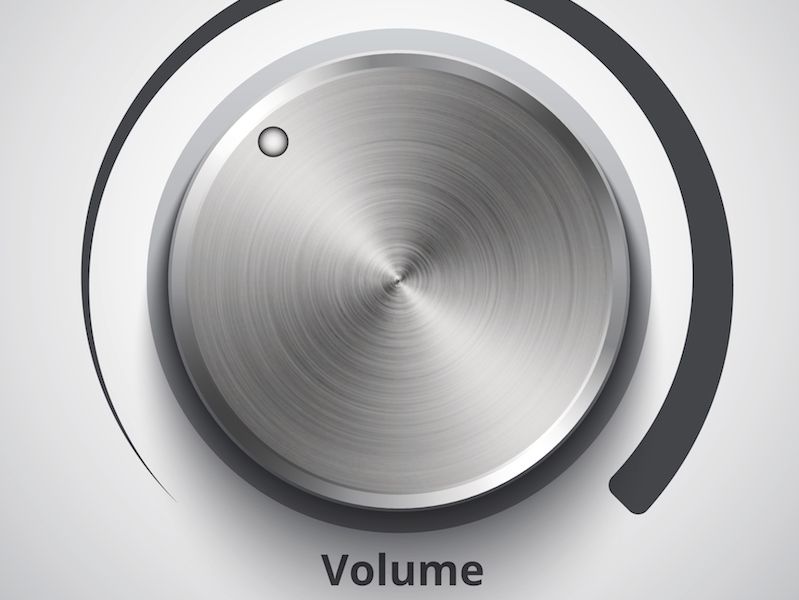
Have you ever seen the “Beware of Sharks” sign when you’re at the ocean? It’s easy to understand that you shouldn’t ignore a caution like that. You might even rethink swimming at all with a sign like that (if the warning is written in big red letters that’s particularly true). Inexplicably, though, it’s harder for people to listen to warnings concerning their hearing in the same way.
Current research has found that millions of individuals disregard warning signs when it comes to their hearing (this research exclusively considered populations in the UK, but there’s little doubt the problem is more global than that). Knowledge is a huge part of the problem. Fear of sharks is fairly intuitive. But being scared of loud noise? And how do you recognize how loud is too loud?
We’re Surrounded by Hazardously Loud Noises
Your ears are not just in danger at a rock concert or on the floor of a machine shop (although both of those venues are, without a doubt, dangerous to your hearing). Many every-day sounds can be hazardous. That’s because it isn’t just the volume of a sound that presents a danger; it’s also how long you’re exposed. Even lower-level noises, including dense city traffic, can be dangerous to your ears when experienced for more than two hours.
Broadly speaking, here’s an approximate outline of when loud becomes too loud:
- 30 dB: Normal conversation would be at this volume level. At this level, there won’t be any limit to how long you can confidently be exposed.
- 80 – 85 dB: This is the sound level of heavy traffic, lawn equipment, or an air conditioner. After around two hours this level of sound becomes damaging.
- 90 – 95 dB: A motorcycle is a good example of this sound level. This amount of exposure gets dangerous in as little as 50 minutes of exposure.
- 100 dB: An oncoming subway train or a mid-sized sporting event are at this volume (depending on the city, of course). This level of sound can become hazardous after 15 minutes of exposure.
- 110 dB: Do you ever turn the volume on your earpods up as high as it will go? On most smartphones, that’s right around this level. This level of exposure is dangerous after only 5 minutes of exposure.
- 120 dB and over: Any sound over 120 dB (think loud rock show or extremely large sporting events) can bring about immediate damage and pain in your ears.
How Loud is 85 dB?
In general, you should consider anything 85 dB or above as putting your ears at risk. The issue is that it isn’t always apparent just how loud 85 dB is. It’s not tangible in the way that a shark is tangible.
And hearing cautions often get neglected because of this when the sound environment isn’t loud enough to cause pain, this is especially true. There are a couple of potential solutions to this:
- Get an app: Your hearing can’t be directly protected with an app. But there are several free apps that can work as sound level monitors. It’s difficult to determine what 85 dB feels like so your hearing can be injured without you even knowing it. Making use of this app to monitor sound levels, then, is the solution. Using this approach will make it more instinctive to recognize when you are moving into the “danger zone”. (and you will also recognize immediately when things are getting too noisy).
- Adequate training and signage: This is true of the workplace, in particular. Signage and training can help reinforce the real dangers of hearing loss (and the advantages of protecting your hearing). Additionally, just how loud your workplace is, can be clarified by signage. Helping employees recognize when hearing protection is suggested or required with proper training can be very helpful.
When in Doubt: Protect
No signage or app will ever be perfect. So when in doubt, take the time to safeguard your hearing. Noise damage, over a long enough time period, can lead to hearing loss. And these days, it’s never been easier to damage your ears (it’s a simple matter of listening to your tunes too loudly).
You shouldn’t raise the volume past half way, specifically if you’re listening all day. If you keep turning it up to hear your music over background sound you should find different headphones that have noise cancellation.
So when volume becomes too loud, it’s essential to recognize it. Raising your own understanding and awareness is the key if you want to do that. It’s not difficult to reduce your exposure or at least use ear protection. But you have to recognize when to do it.
These days that should also be easier. That’s even more relevant now that you have some awareness.
Schedule a hearing exam today if you think you might be suffering from hearing loss.